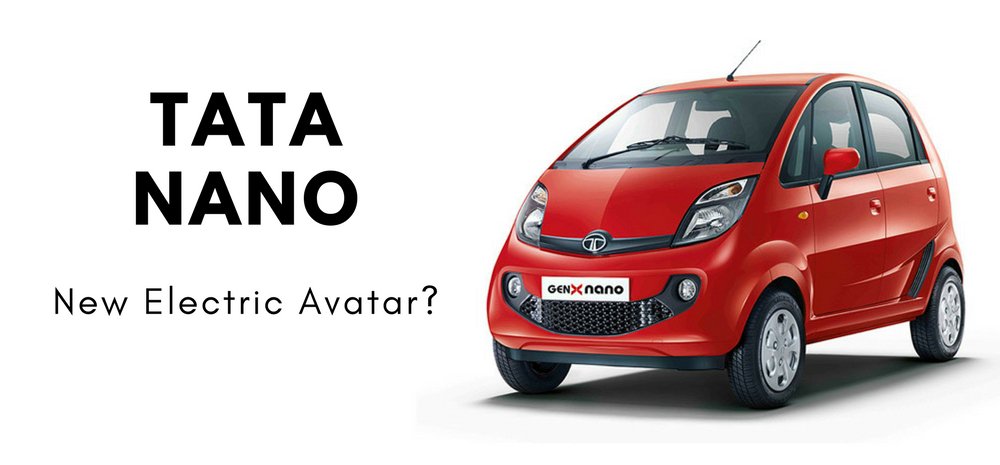RIP Nano? Production Drops To 2 Units A Day; Dealers Have Stopped Placing New Orders
The rise and demise of Tata Nano cars is one of the most fascinating stories of branding, business planning and failure.

Tata Nano, launched in 2008 by legendary Ratan Tata as the ‘world’s cheapest car’ and ‘people’s car’ is almost dead now. As per reports coming in, car dealers across India have stopped placing new orders for Nano, even as production of this car has been lowered to almost 2 per day.
The rise and demise of Tata Nano cars is one of the most fascinating stories of branding, business planning and failure.
However, not everything is over for Nano. Although Nano’s orders have declined, and production at Tata’s Sanand plant has been almost halted, commercial usage of Nano is witnessing an upswing, and maybe the new electrified avatar of Nana will be the new journey of this car.
We try to explore..
Car Dealers: No More Nano Please!
Business Standard has published a report, wherein they have interviewed and asked car dealers about the fate of Tata Nano’s sales, and the results have been depressing.
Most of the dealers have stopped placing orders for new Tata Nano, as their focus has now shifted to newer Tata models such as Tiago, Tigor, Hexa and Nexon.
If we see the numbers, then the reality will hit you: In August of 2017, Tata delivered 180 Nanos across 630 outlets, compared to 711 units in August last year.
In September, only 4 units of Nana was delivered, which became just 57 in October.
Although GST helped few dealers to flush out the existing stock, new bookings have dropped to an almost zilch.
The reports states that average production of Nano at Sanand plant has dropped to just 2 per day now, signalling the demise of the people’s car.
A dealer in UP said, “We are liquidating old stocks. There is hardly any customer query,”
Re-emergence Of Nano As Taxis
Originally, Tata projected Nano as the ‘cheapest car’, and targeted motor-bike owners and auto-drivers to replace their vehicles with Nano. This strategy no doubt backfired, but a new hope has been witnessed in the form of electrified Nano, which are suitable for taxi and commercial usage.
A source from Tata said,
“The Nano demand is mainly from the taxi segment. We have not stopped production of the car altogether.”
Last week, we had reported that Tata Motors have entered into a 50:50 JV with Coimbatore-based Jayen Automotives, which are modifying Nano and making them electrified for taxi usage.
Ola cabs has already partnered with Tata-Jayem, and 400 electrical Nanos would soon run in Delhi. Maybe this is what future holds for Nano now.
If we see the numbers, then we will find that Tata manufactured total of 1299 units of Nano this year, compared to 5380 units last year. This means that although sales have stopped, Nano is being projected as viable taxi vehicle, that too electric.
A vendor who supplies to Tata for car manufacturing (including Nano) said,
“We are no longer blocking our production capacity for Nano. We continue to supply if there is a need which is stated in advance,”
However, another fact is that, Tata have not told the vendors to manufacture parts based on BS VI emission norms, which means that they can stop the production entirely by 2020, because after that, every car has to be compliant with BS VI emission norms.
In a statement, Tata Motors said,
“We already have a well-defined passenger vehicle strategy in place that will look at not only the best way of addressing the segments’ requirements but an overall perspective of the portfolio. We continue to produce Nano catering to customer demand in key markets,”
Hence, things are still dicey from Tata’s end, as no major decision has been taken yet.
In 2013, Ratan Tata had revealed why Nano failed, and maybe, the reasons will prove to be the biggest learnings for the auto-major.
We will keep you updated as receive more information.

It died because it was hyped too much before launch, and simply did not live up to that hype (those dinky wheels!). Now they’re giving it to Jayem for a song I guess. Jayem gets a monocoque for cheap to experiment on. Once they’ve stabilised the taxi segment, the Nano EV will come back as a cheap, clean urban commute vehicle for 18year olds. Which can’t be a bad thing.